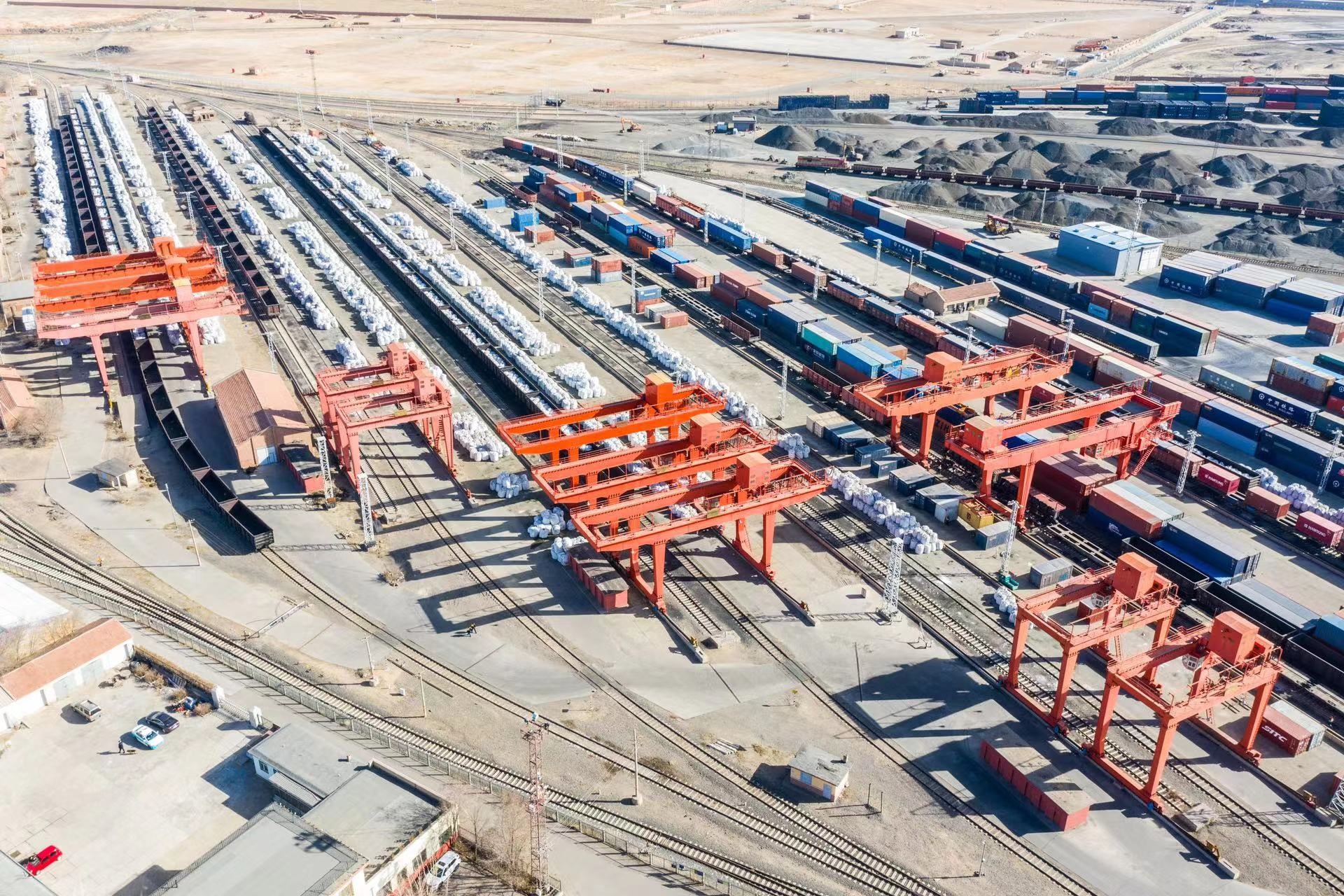China-Europe freight train service sees stable growth
China-Europe freight train service maintained stable operation in April, said China's National Development and Reform Commission.

Photo taken on April 8 shows a railway freight yard in Erenhot, north China’s Inner Mongolia autonomous region. Erenhot’s frontier inspection station inspected and accepted 734 China-Europe freight trains in the first quarter of 2022, up 25.7 percent from a year ago. These trains carried 642,000 tonnes of export cargos, rising 41.4 percent year on year. (People’s Daily Online/Guo Pengjie)
According to statistics released by the top economic planner, the number of China-Europe freight train trips rose 3 percent month-on-month to 1,170 in April.
From 2016 to 2021, the annual number of China-Europe freight train trips has surged from 1,702 to 15,183, growing 55 percent each year on average, and the value of goods transported by the cargo service skyrocketed from $8 billion in 2016 to $74.9 billion in 2021. Even after COVID-19 broke out, the number of trips made by the freight trains still went up by 50 percent and 22 percent in 2020 and 2021, respectively.
Given the impacts of the pandemic on international maritime and air transportation, there has been a sharp rise in freight charges, which leads to impeded global logistics and shrinking international trade.
Under such circumstances, China-Europe freight trains are serving as a strong pillar for global industrial and supply chains thanks to their safe, stable, efficient and green logistics services. The cargo service has become an important way of land transport on the international logistics link.
Since the outbreak of the COVID-19 pandemic, China-Europe freight trains have made over 1,000 trips each month for two years. On Jan. 29 this year, the total number of China-Europe freight train trips exceeded 50,000.
The cargo service, relying on its strong capability of international transport, has built a channel of life amid the pandemic. As of the end of April this year, China-Europe freight trains had shipped 14.1 million items of anti-pandemic supplies that weighed 108,000 tonnes. The cargo service has been widely appraised by the Belt and Road countries and the international society.
Through the regular operation of China-Europe freight trains, China has made important contributions to the global fight against COVID-19 and economic recovery, which indicates the high-quality development of the Belt and Road Initiative (BRI), and vividly explains the vision of building a community with a shared future for mankind.
Today, the cargo service connects 185 cities in 23 European countries and carries over 50,000 types of commodities. There has been a prominent increase in the number of loaded containers carried by China-Europe freight trains, and the numbers of departing and returning trips are getting more balanced. Besides, new service forms of freight trains are emerging.

A China-Europe freight train carrying COVID-19 antigen rapid test kits heads to Duisburg, Germany from Xiamen, southeast China’s Fujian province, April 21, 2021. (People’s Daily/ Zhuang Jianhua)
While sending premium products to hundreds of millions of people along the rail routes, China-Europe freight trains have catalyzed the building of a number of logistics, industrial and commerce centers, which provide thousands of jobs for local residents. It has constantly expanded the win-win "circle of friends" of the BRI.
At the Port of Duisburg, Germany, hundreds of logistics enterprises have been established because of China-Europe freight trains, offering more than 20,000 jobs. At the Port of Malaszewicze, Poland, China-Europe freight trains are driving local business volume and promoting local economic and social development.
The cargo service, bringing infinite opportunities to more countries to share China's high-level opening-up, is promoting interconnectivity and win-win cooperation among Asian and European countries, and contributing to the building of an open world economy.
Photos
Related Stories
- China-Europe freight train heads to Budapest
- Int'l freight train departs from Chongqing for Myanmar
- Land-sea train from China to Laos launched with faster clearance
- No casualties reported following freight train accident in north China
- New freight train route links China's Chongqing, Vietnam
- Chongqing adds station for China-Laos international freight train service
- New freight train connection runs between Germany and China
- New freight train route connects China, Germany
- China's Shandong sees surge in China-Europe freight train service
- China-Europe freight train trips top 50,000
Copyright © 2022 People's Daily Online. All Rights Reserved.









